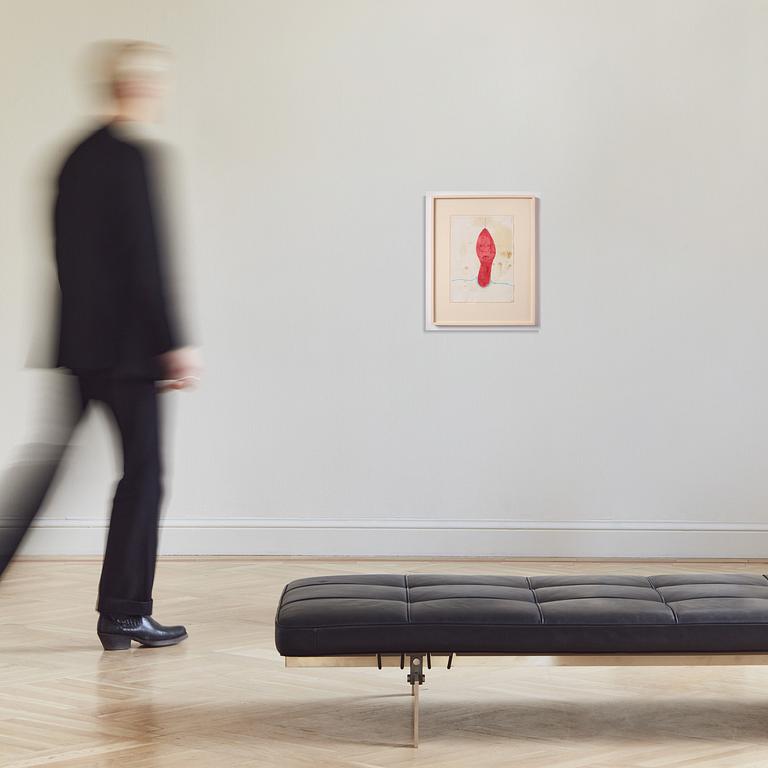Louise Bourgeois
"Untitled"
Signed LB. Executed in 1997. Watercolour, coloured pencil and pencil, 41.5 x 30.3 cm.
Alkuperä - Provenienssi
Cheim & Read Gallery, New York.
Private Collection, Stockholm. Acquired from the above by the present owner.
Muut tiedot
The 'Femme Maison' (1946–47) series of paintings by French American artist Louise Bourgeois address the question of female identity. In these paintings, the heads and bodies of nude female figures have been replaced by architectural forms such as buildings and houses. 'Femme Maison' translates from the French as ‘housewife’ or literally, ‘woman house’. More than 20 years later the series sparked a collaboration between gallery owner Maria Fluxà and Louise Bourgeois. The Spanish gallery owner and collector Fluxà first encountered Bourgeois’s work at the 1982 MoMA retrospective and felt an emotional connection to the 'Femme Maison'. 'When I discovered Femme Maison I felt understood. Someone who did not know me had drawn a portrait of me', she has said. Fluxà then began collecting Bourgeois’s work, which she displayed in her gallery, Lluc Fluxà, in Palma de Mallorca. She later met the artist, which led to discussions about a possible collaboration between the two. The illustrated book, "Metamorfosis" was the result of this encounter. The subject matter of the book involves Fluxá's background, including the fact that her father ran an important shoe manufacturing business owned by the family. Fluxà had a difficult relationship with her father, a problem that Bourgeois could relate to. The patriarchal father contributed largely to her feelings of inferiority, addressed in both her performance and in “Metamorfosis.”The book was published by Galerie Lelong, Paris, in 1999 and it contained texts by Fluxà and original engravings by Louise Bourgeois. The book's illustrations include images of feet and shoes and Fluxá also sent Bourgeois a pair of wooden shoe forms. The watercolour by Bourgeois in this auction was executed in 1997. It was during this time that Fluxà traveled to New York twice a year to work with Bourgeois. A dignified woman is portrayed with a string of pearls around her neck. Her face is replaced by the bright red sole of a shoe. A few strands of hair stand straight up from the top of her head. This 'Femme Maison' is not trapped in an architectural structure but portrayed as an upright red-hot propagator of the feminist movement.



























































